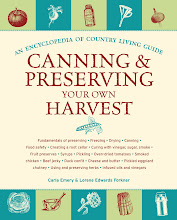Today, many of us appreciate roses as something to be admired in a solely visual sense. What with modern plant hybridization, the vast majority of rose varieties commercially available have little to no fragrance. But Shakespeare was right in noting the sweet scent of the rose as its most distinctive and valuable attribute (Romeo and Juliette, II, ii, 1-2). According to Carla Emery, “the scentless rose is a modern reality” and one definitely worth avoiding if you want to do more than look at your rose plants. Though they may be thorny, fragrant roses have a lot to offer in the kitchen and for arts and crafts. Carla Emery suggests sticking to “old-fashioned” roses like Damasks, Bourbons, Centifolias, Albas, and Gallicas to use in potpourris, rose jars, beads, and food.
But what exactly is it about the rose that we can find useful? Emery focuses on the hips and the petals.
Rose Hips—These are the round orange-to-reddish “fruit” formed after the flower of a rose has bloomed. The hip is the seedpod of the plant. Some hips are better tasting and bigger than others; Carla Emery recommends Japanese rose varieties, sweetbriar eglantine, or wild rose hips for their generous size and doses of Vitamin C!
Rose Petals—These are a bit more obvious: the petals of the blooming flower contain oils you can use for scent or flavor. Harvesting rose petals takes a bit of attention, though:
Gather just when the rose has fully expanded. If you wait a day longer, until they start to fade, they will have lost some of that precious fragrance. Gather in the morning after the dew has dried, but before they have gotten really warmed by the sun. Dry before proceeding by pressing them gently between layers of cloth. Dry them in a dehydrator or on a muslin cloth laid over a screen in an airy, shady place.
Here are a few ideas to make the most your old-fashioned roses:
Rose Hip Tea
Boil dried coarse-ground rose hips with water, about 1 T. for each cup of tea. The longer you boil, the stronger your tea. Mash the hips with a spoon to get out all the juice, and strain. Sweeten with brown sugar or honey.
Rose Brandy
To flavor sauces for cakes and puddings, gather rose petals while the dew is on them. Fill a bottle with them. Then pour into the bottle a good brandy. Steep 3 to 4 weeks. Strain and rebottle.
Rose Petal Honey
This recipe was a favorite of Martha Washington’s. Bring 2 pints of honey to a boil. Add 1 pint rose petals. Let stand 4 hours. Heat again. Strain into jars.
Damp Rose Potpourri
Dry the rose petals just until they feel leathery — 8 hours or overnight. Use ice cream-type salt that is coarse and not iodized. Layer salt and rose petals in the bottom of a glass jar, 1⁄4 c. salt to 2 c. petals. Add some orrisroot, too. Keep a lid on the jar and open only when you want to let out some fragrance.








No comments:
Post a Comment